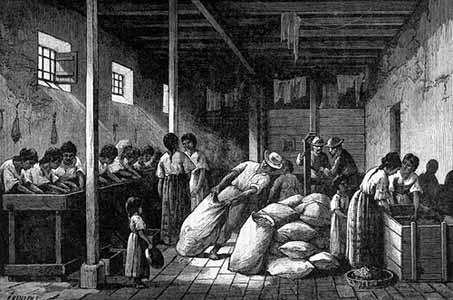A Brief History of Costa Rica
Written by Elizabeth Speigle
Prior to Spanish conquest in the sixteenth century, Costa Rica was an intermediate cultural location, between Mesoamerica and South American Andean culture. There were nearly half a million indigenous people living in what is now Costa Rica upon conquest, though by 1611 only 10,000 remained. The Spanish hoped that Costa Rica would live up to its namesake, “rich coast,” but in reality, there were few precious minerals or gold to be found. Costa Rica was thus ignored by many conquistadors, and instead became a place of agricultural development.
 Central America gained independence from Spain in 1821. The transition to autonomous leadership in Costa Rica was fairly peaceful, as the Spanish had not been as influential in the country. As the nineteenth century progressed, Costa Rica became wealthy from coffee exports, and began to embrace European culture and Enlightenment ideals such as education, infrastructure development, and public administration.
Central America gained independence from Spain in 1821. The transition to autonomous leadership in Costa Rica was fairly peaceful, as the Spanish had not been as influential in the country. As the nineteenth century progressed, Costa Rica became wealthy from coffee exports, and began to embrace European culture and Enlightenment ideals such as education, infrastructure development, and public administration.
Many scholars consider 1889 an important year for Costa Rican democracy, when elections were free and honest for the first time. However, there was still political fraud and dishonesty for the next sixty years. During the twentieth century, there were only two periods of violent conflict in Costa Rica. The dictator Tinoco was overthrown in 1919, and a 44-day civil war occurred in 1948, after an uprising that followed the presidential elections. After this civil war, a transitional junta, or committee, was formed, which strengthened social reforms and abolished the national army. A new constitution was written in 1949 that granted suffrage to women and blacks.
 The decades after World War II saw great economic growth in Costa Rica, and the standard of living rose. Economic crisis in the late 1970s in addition to conservative political leadership led to increasing privatization in the 1980s. Various reforms that had been created in the 1940s were reversed, and public spending decreased. Foreign tourism increased in the 1990s, and began to rival traditional exports of coffee and bananas.
The decades after World War II saw great economic growth in Costa Rica, and the standard of living rose. Economic crisis in the late 1970s in addition to conservative political leadership led to increasing privatization in the 1980s. Various reforms that had been created in the 1940s were reversed, and public spending decreased. Foreign tourism increased in the 1990s, and began to rival traditional exports of coffee and bananas.
Costa Rica has a unique place as a peaceful democracy in the midst of violent conflict in the surrounding countries of Central America. The goal of many of its citizens is quedar bien, or to get along with everyone. Costa Ricans, or “Ticos,” also value family, education, peace, and community. Costa Rica has been a valuable model of full and peaceful living for many around the world.
References:
Biesanz, Mavis Hiltunen, Richard Biesanz, and Karen Zubris Biesanz. The Ticos: Culture and Social Change in Costa Rica. Boulder, CO: Lynne Rienner, 1999.
Molina, Iván and Steven Palmer. The History of Costa Rica. San José, Costa Rica: Editorial de la Universidad de Costa Rica, 1998.